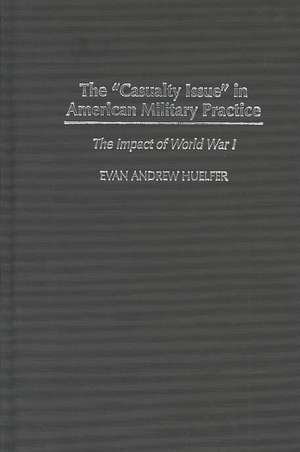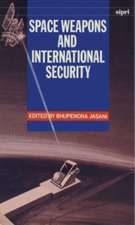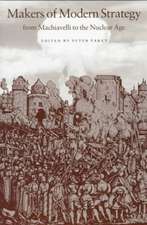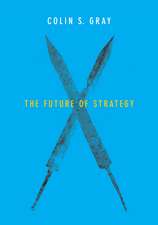The Casualty Issue in American Military Practice: The Impact of World War I
Autor Evan A. Huelferen Limba Engleză Hardback – 29 oct 2003 – vârsta până la 17 ani
Preț: 437.67 lei
Preț vechi: 604.15 lei
-28% Nou
Puncte Express: 657
Preț estimativ în valută:
83.76€ • 87.12$ • 69.15£
83.76€ • 87.12$ • 69.15£
Carte tipărită la comandă
Livrare economică 14-28 aprilie
Preluare comenzi: 021 569.72.76
Specificații
ISBN-13: 9780275977603
ISBN-10: 0275977609
Pagini: 264
Dimensiuni: 156 x 235 x 24 mm
Greutate: 0.51 kg
Ediția:New.
Editura: Bloomsbury Publishing
Colecția Praeger
Locul publicării:New York, United States
ISBN-10: 0275977609
Pagini: 264
Dimensiuni: 156 x 235 x 24 mm
Greutate: 0.51 kg
Ediția:New.
Editura: Bloomsbury Publishing
Colecția Praeger
Locul publicării:New York, United States
Notă biografică
EVAN ANDREW HUELFER is a major on active duty in the U.S. Army. He has served in a wide variety of command and staff positions. Dr. Huelfer has taught Military History at West Point. In 2003 he served as the Lead Planner for the Coalition Forces Land Component Command in Kuwait. Among his earlier publications is his edited collection Readings for the History of Military Art (2000).
Cuprins
PrefaceAbbreviationsIntroductionThe Experience of the Great WarThe Dark Shadow of the Great WarDrawing Immediate Lessons from CombatRevamping the Military Education SystemThe Application of American PowerStrategic Planning During the Interwar PeriodPreparing for War, 1939-1941ConclusionSelect BibliographyIndex











